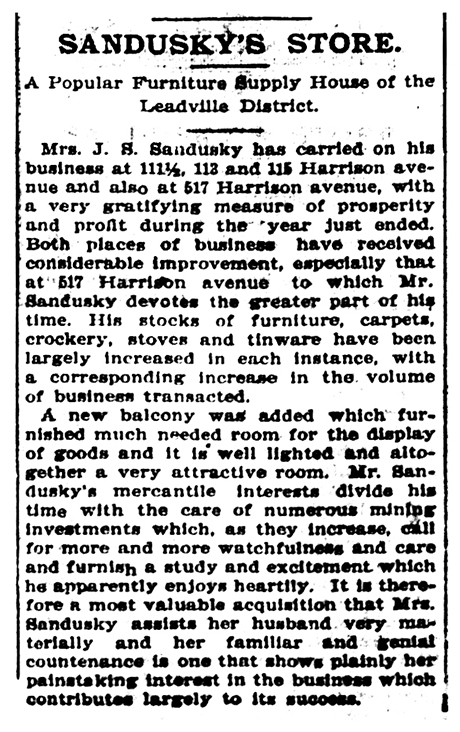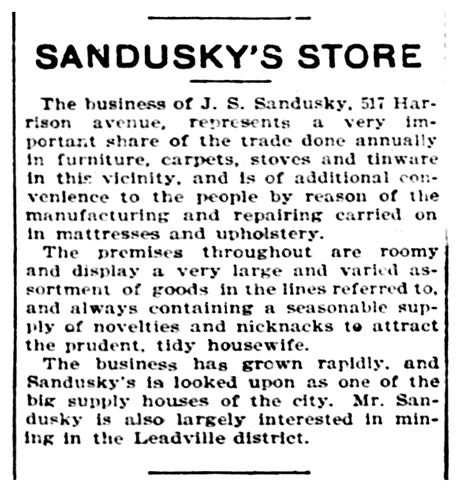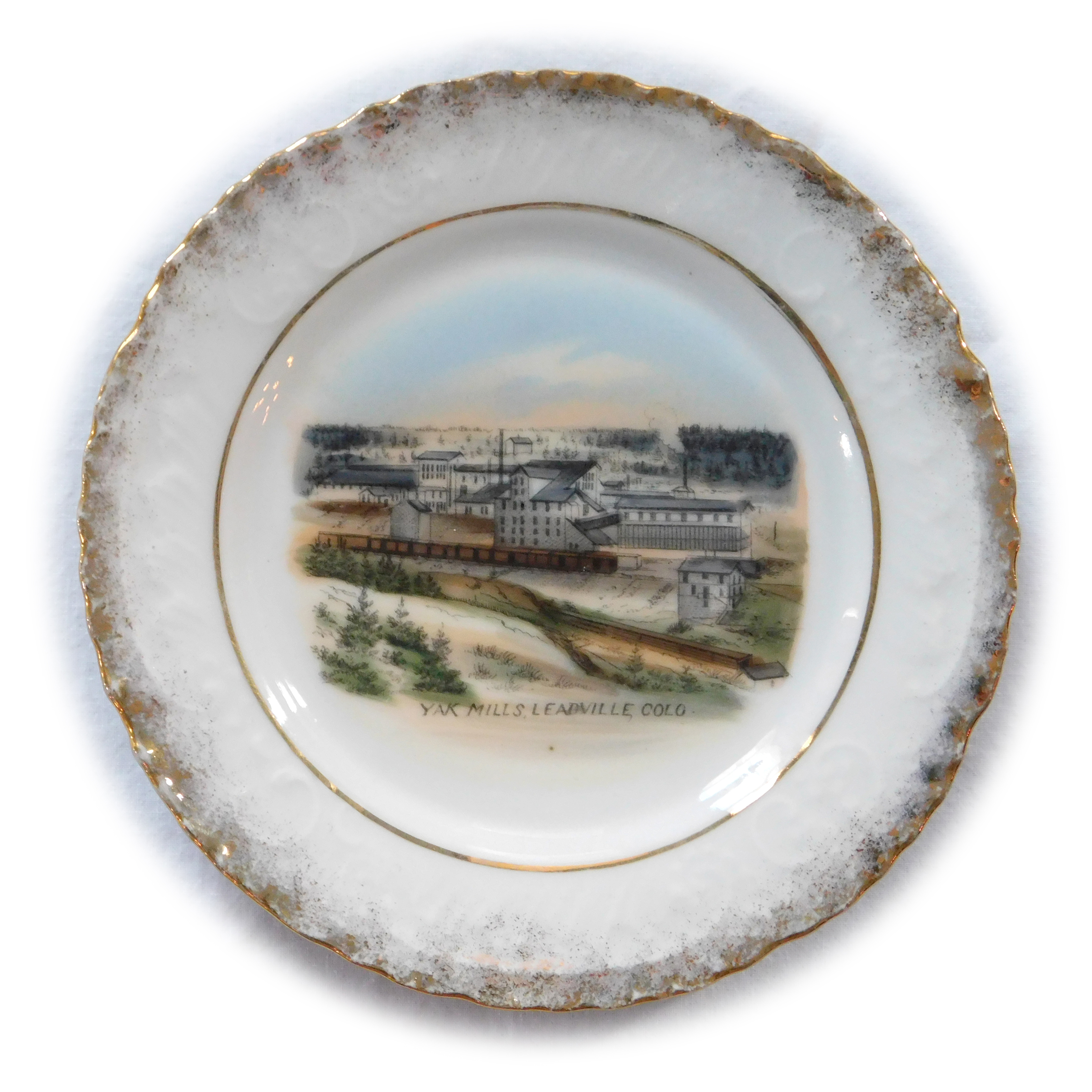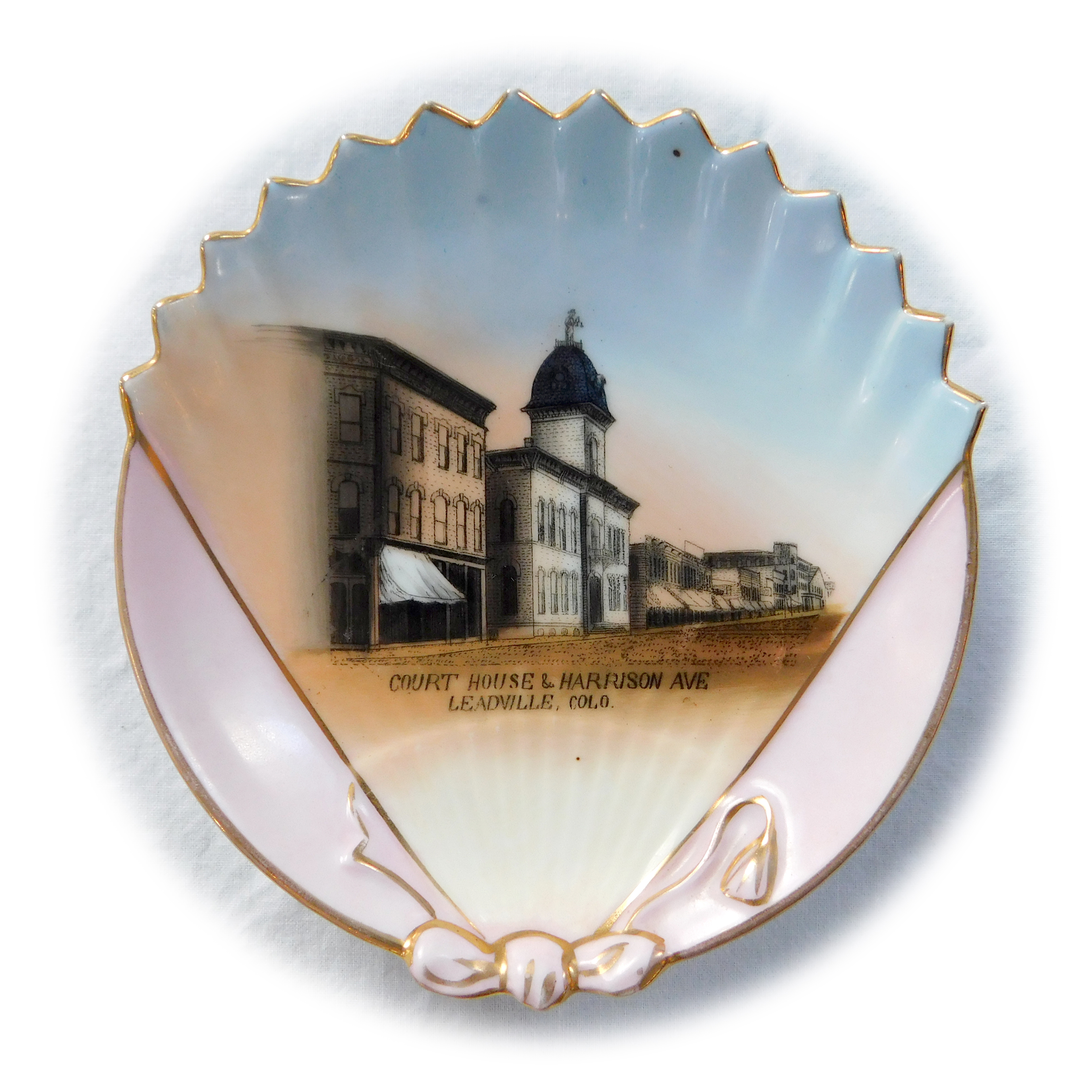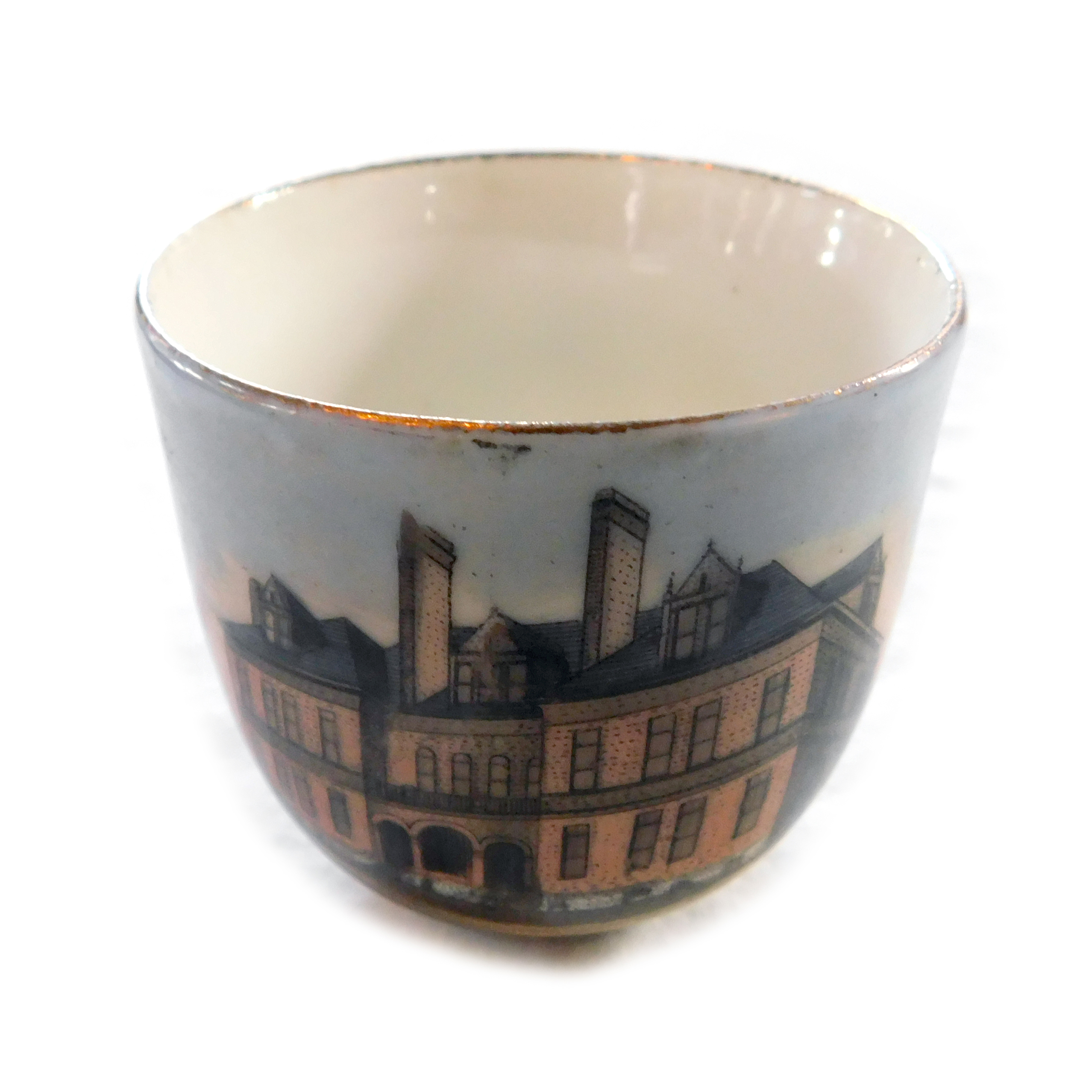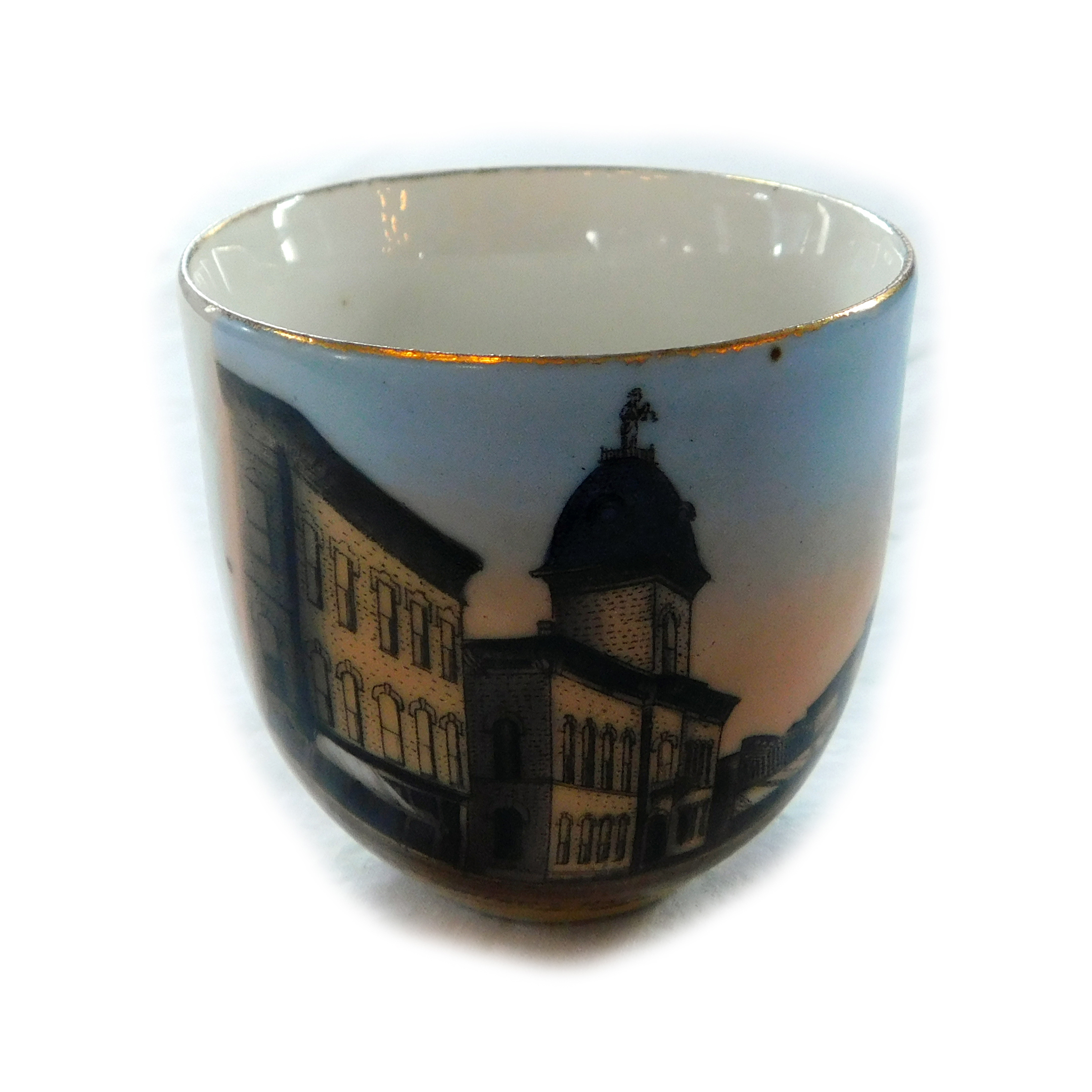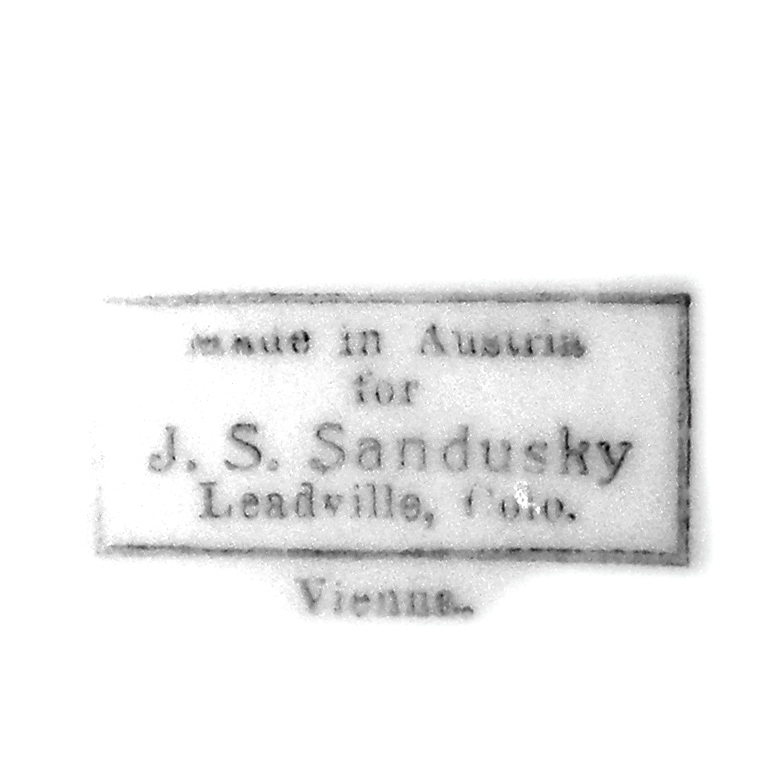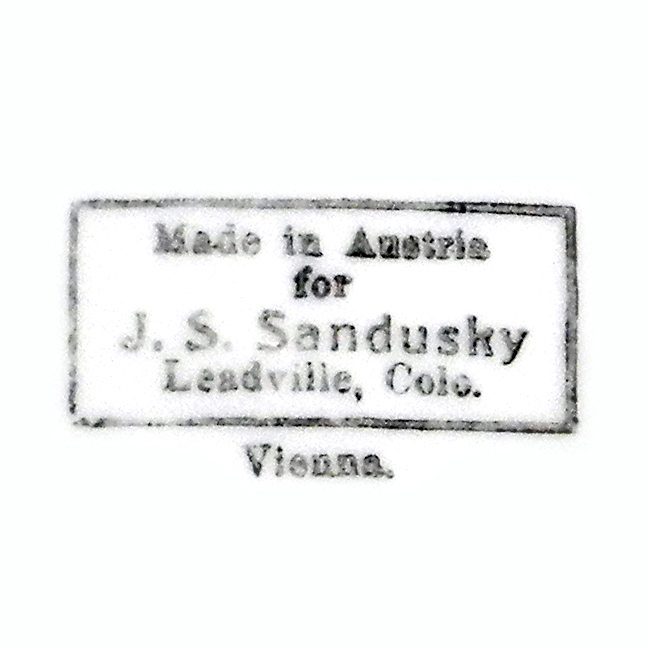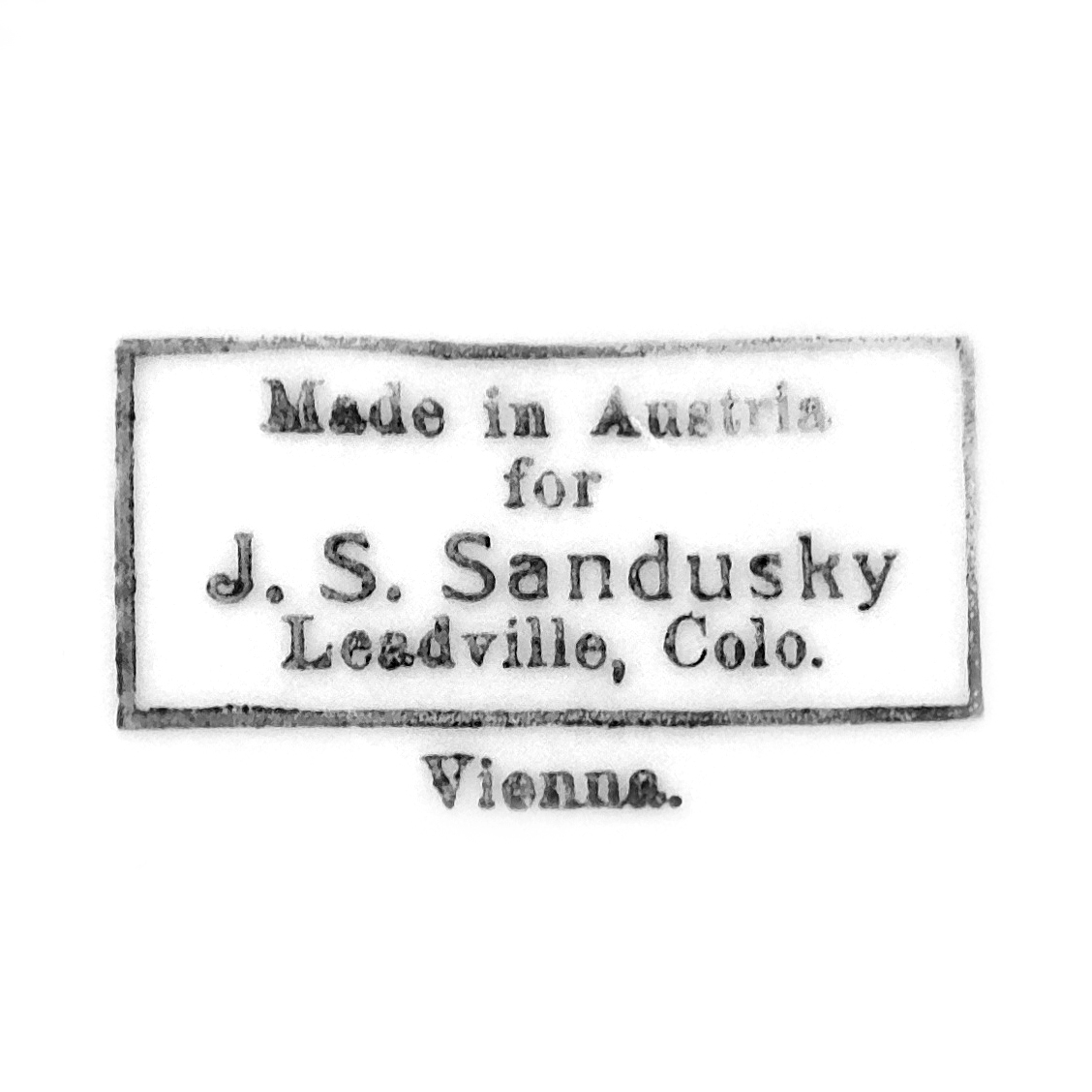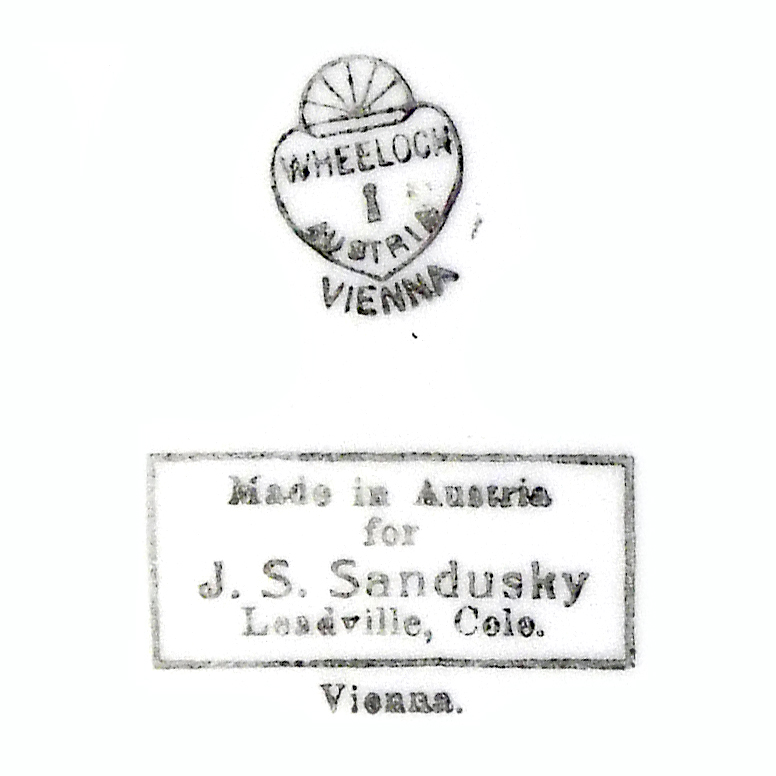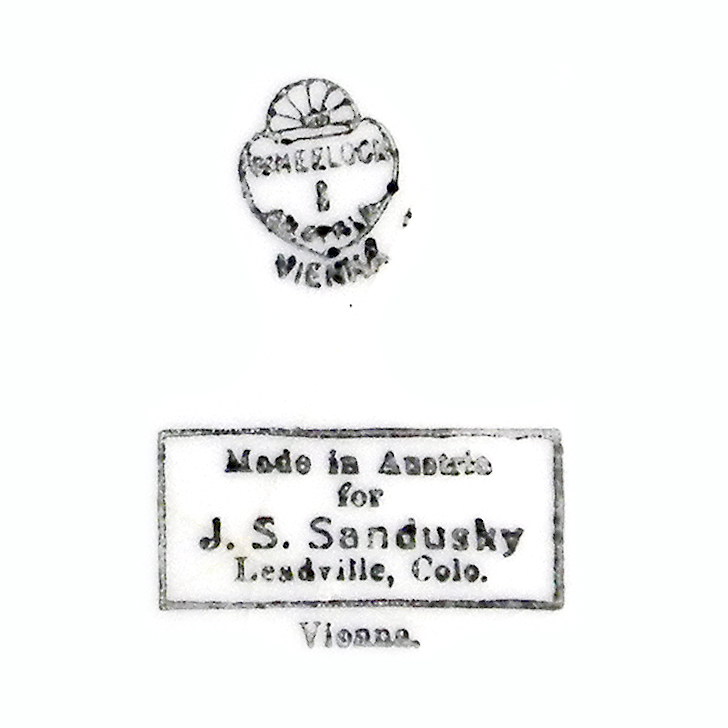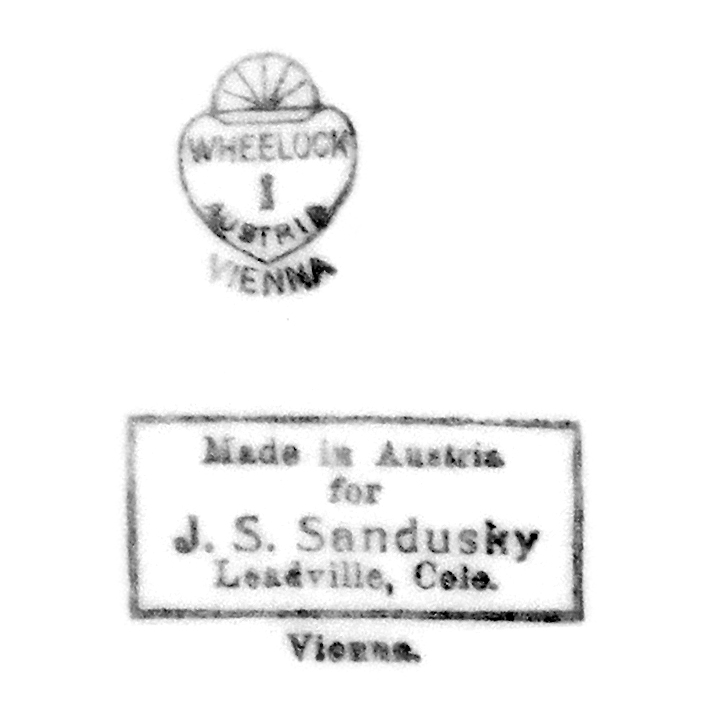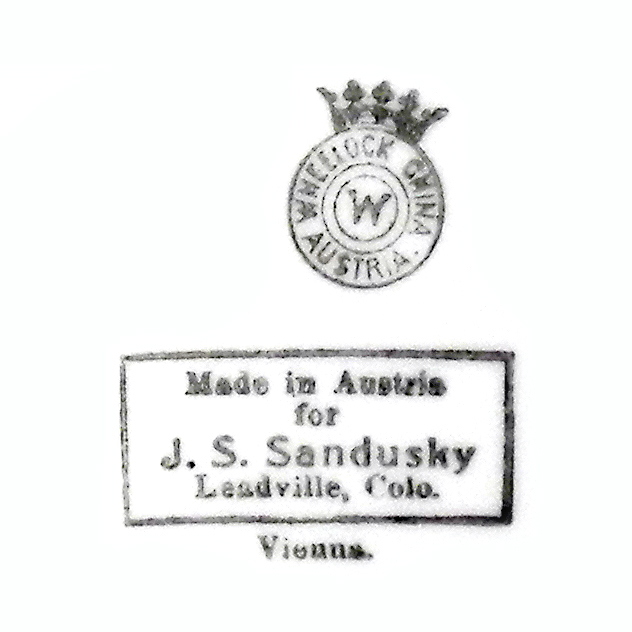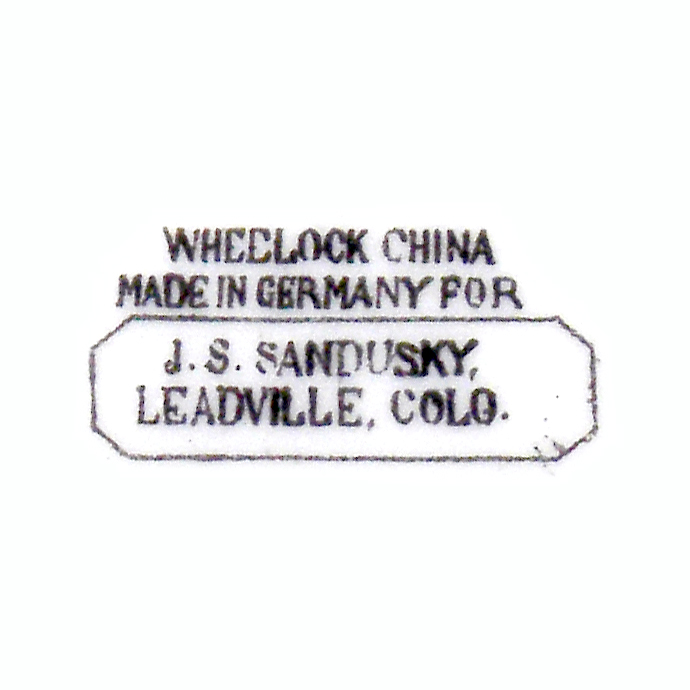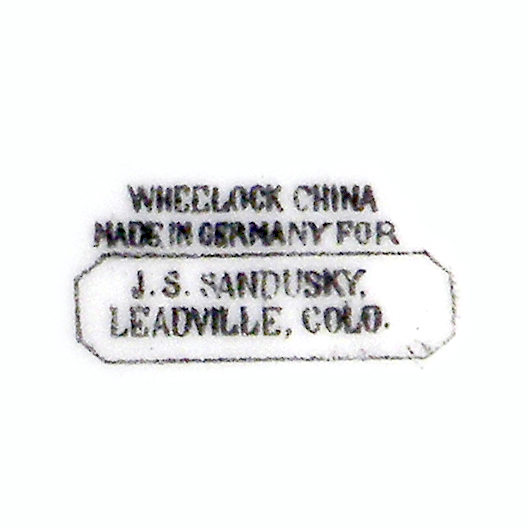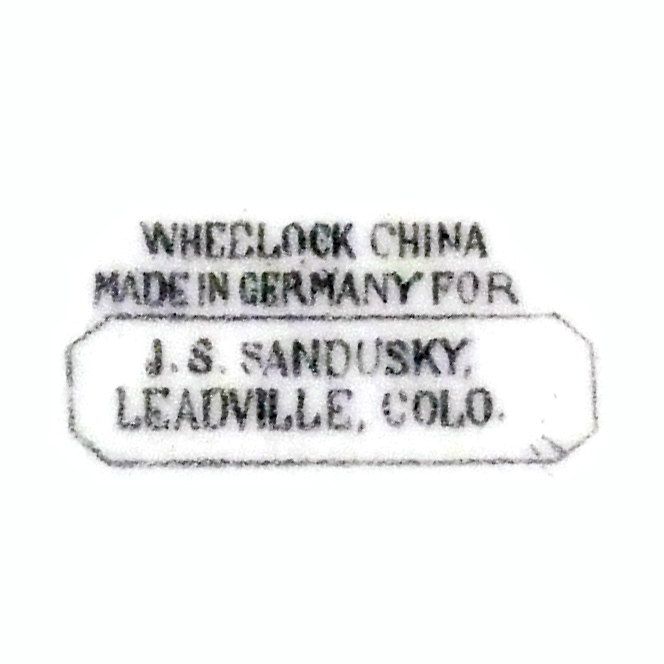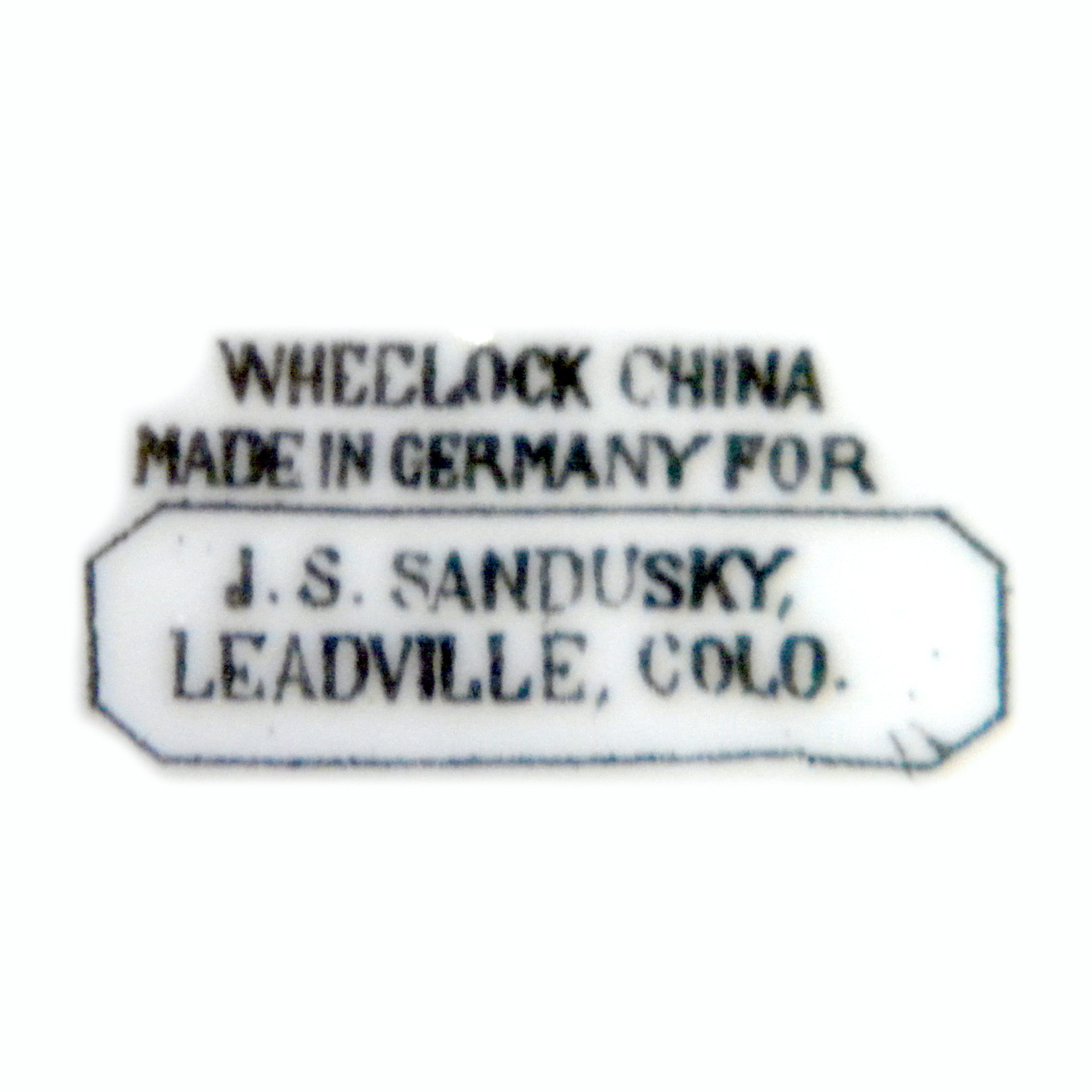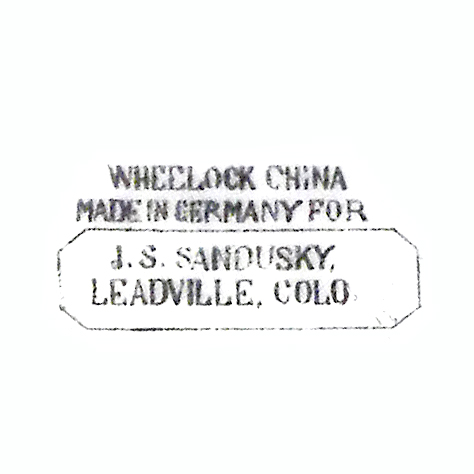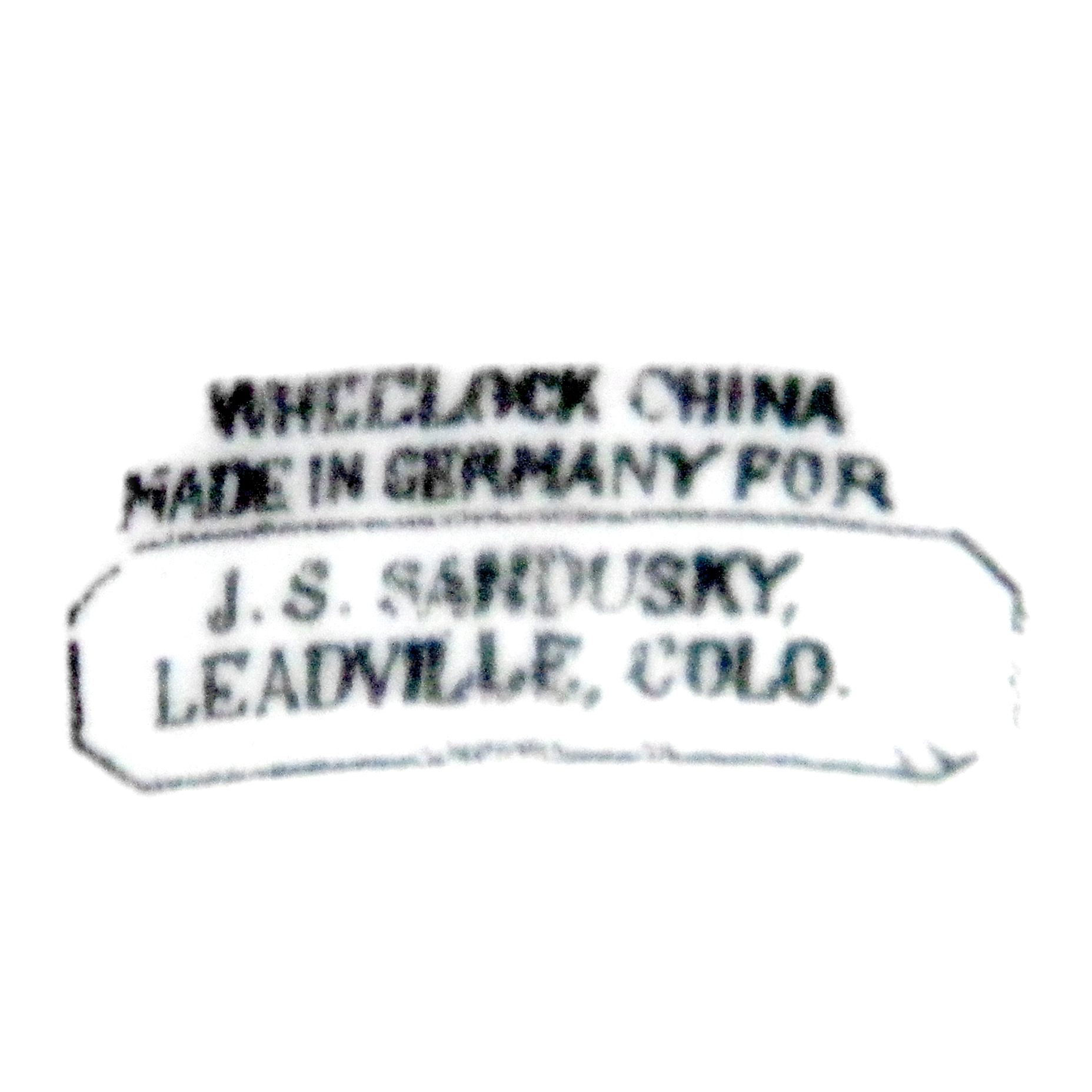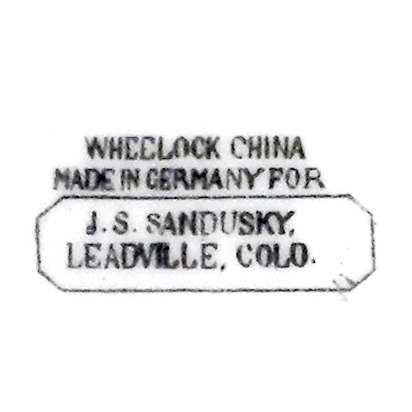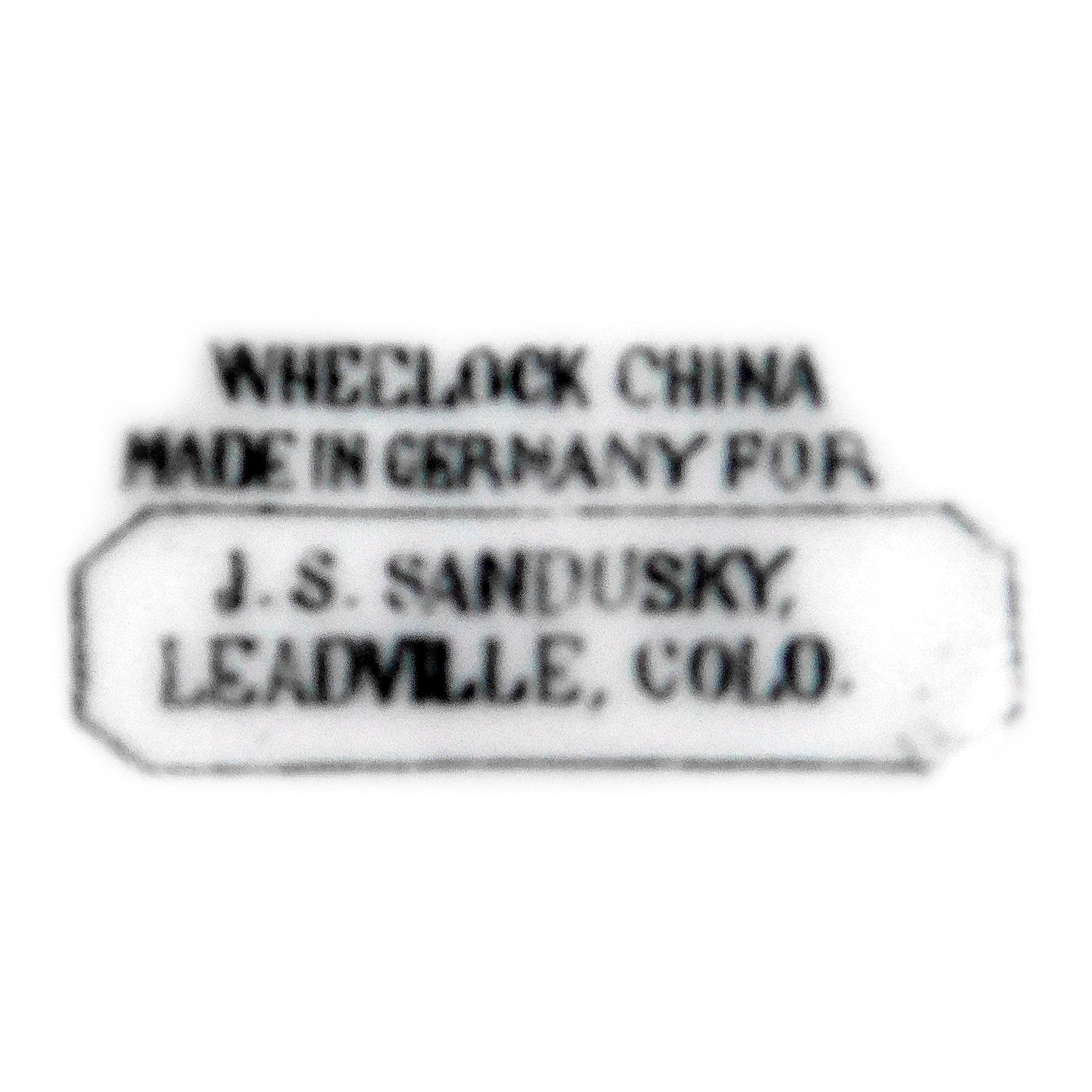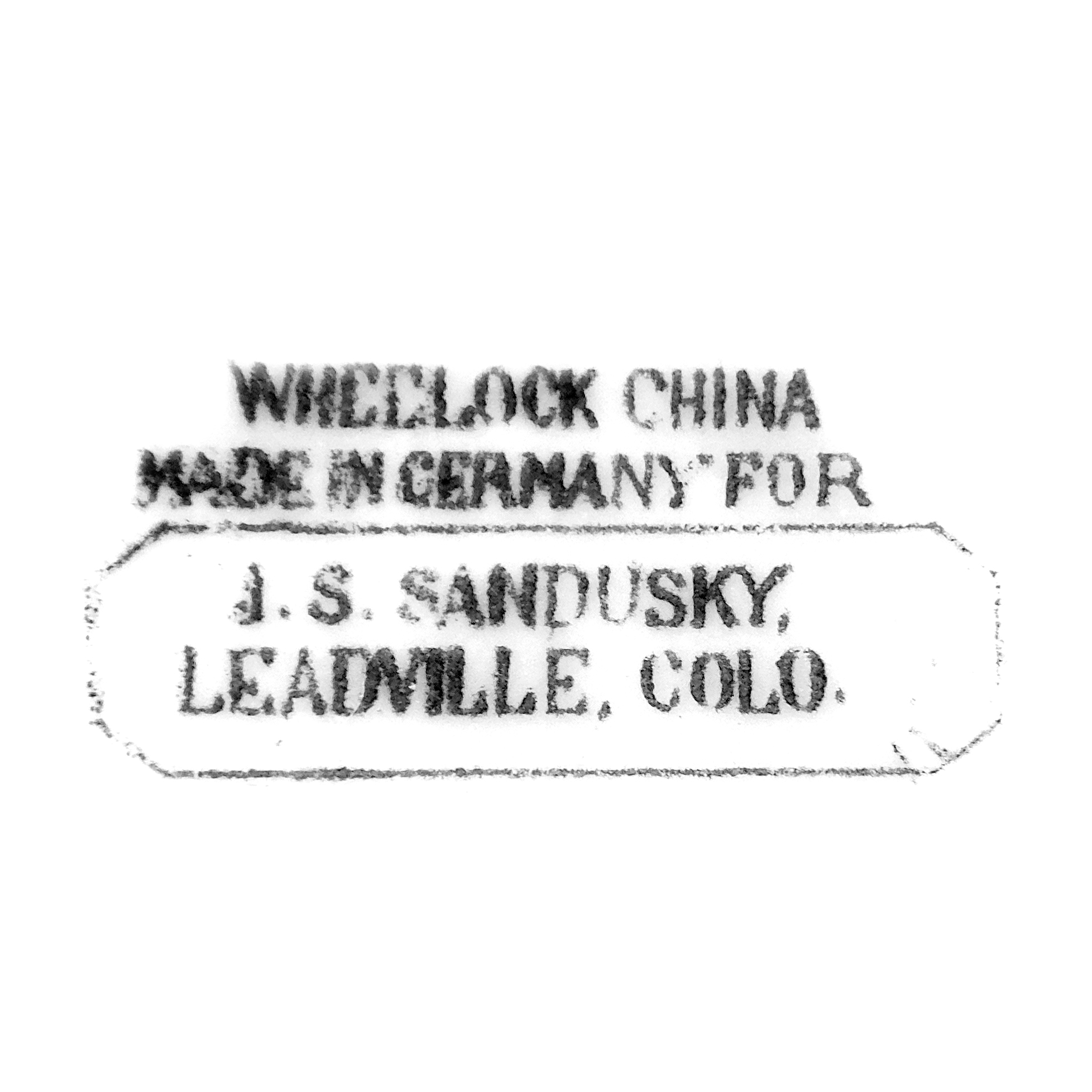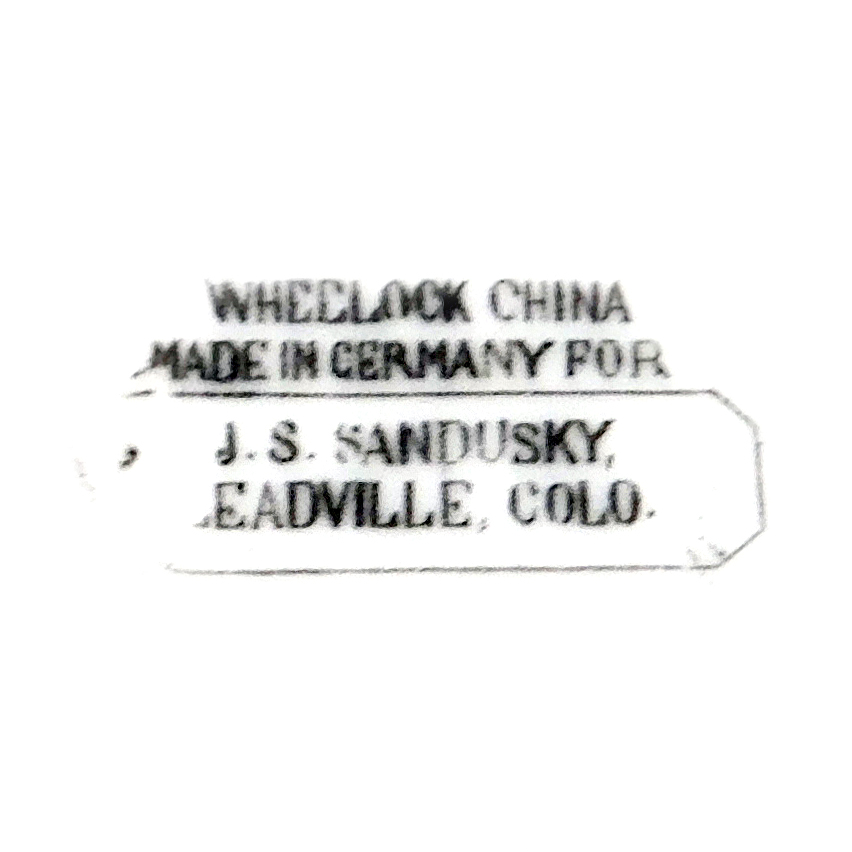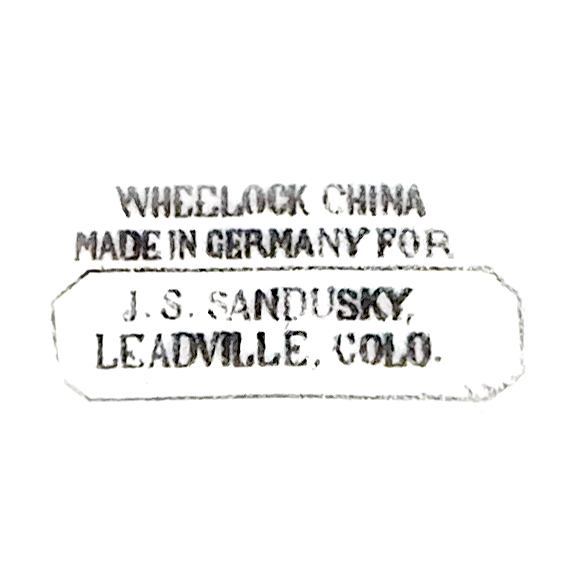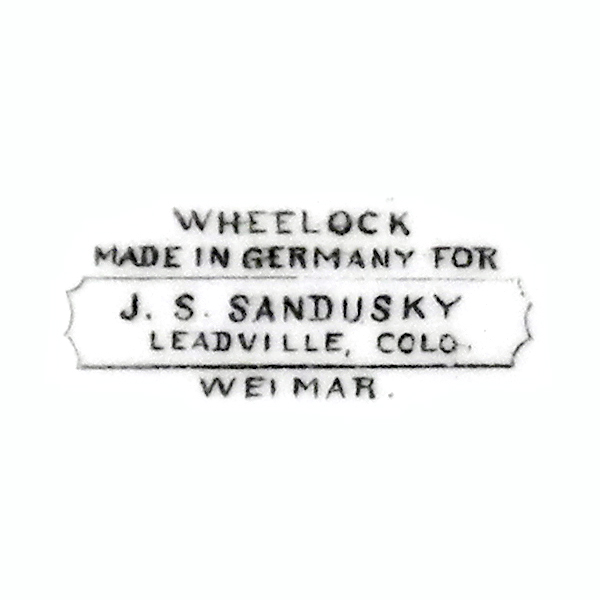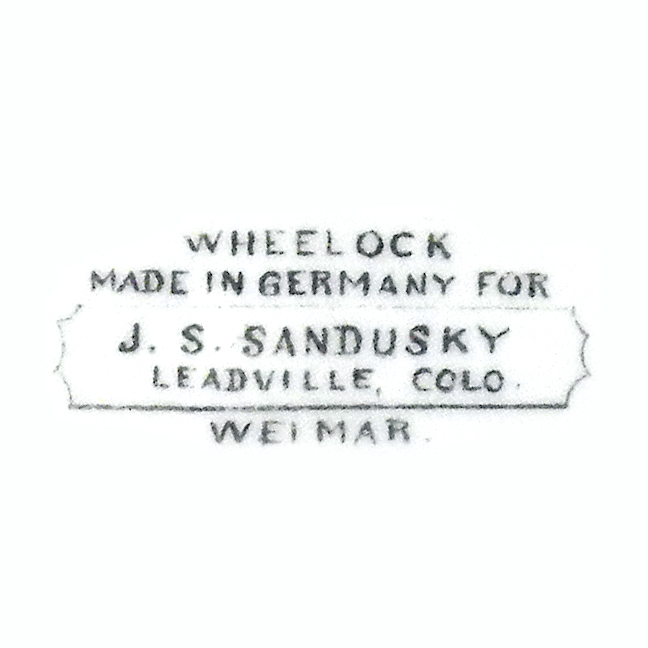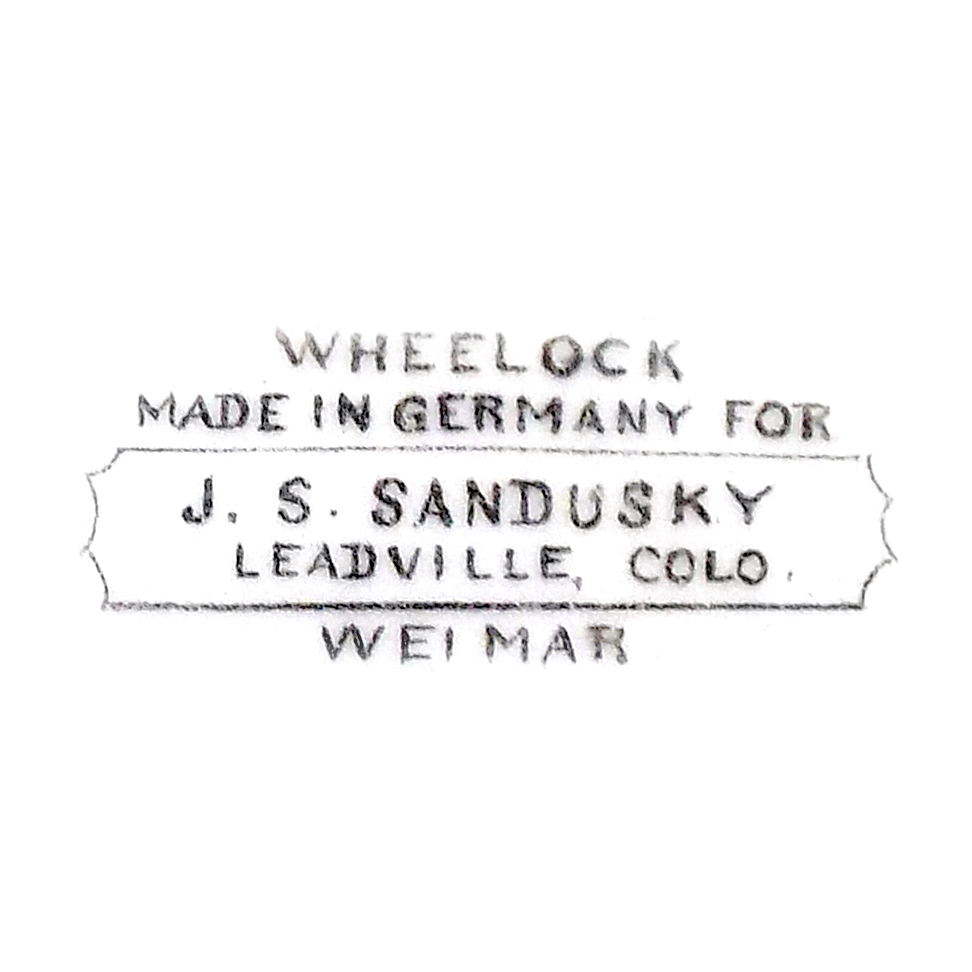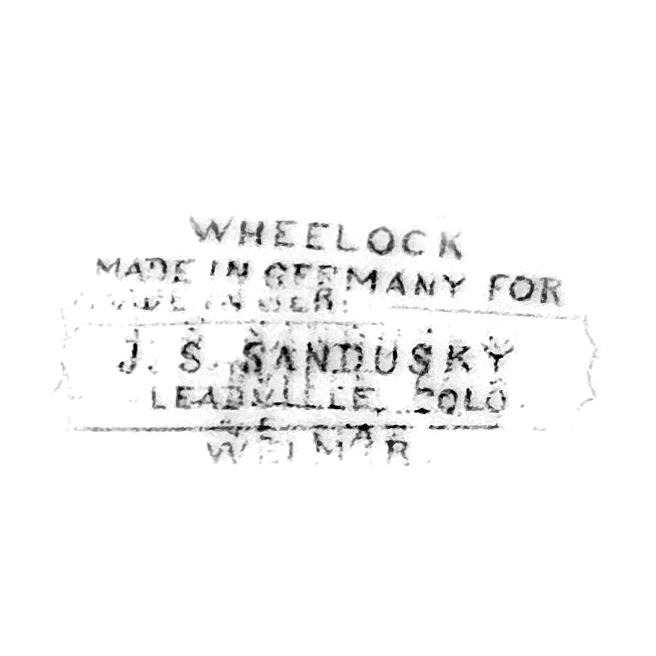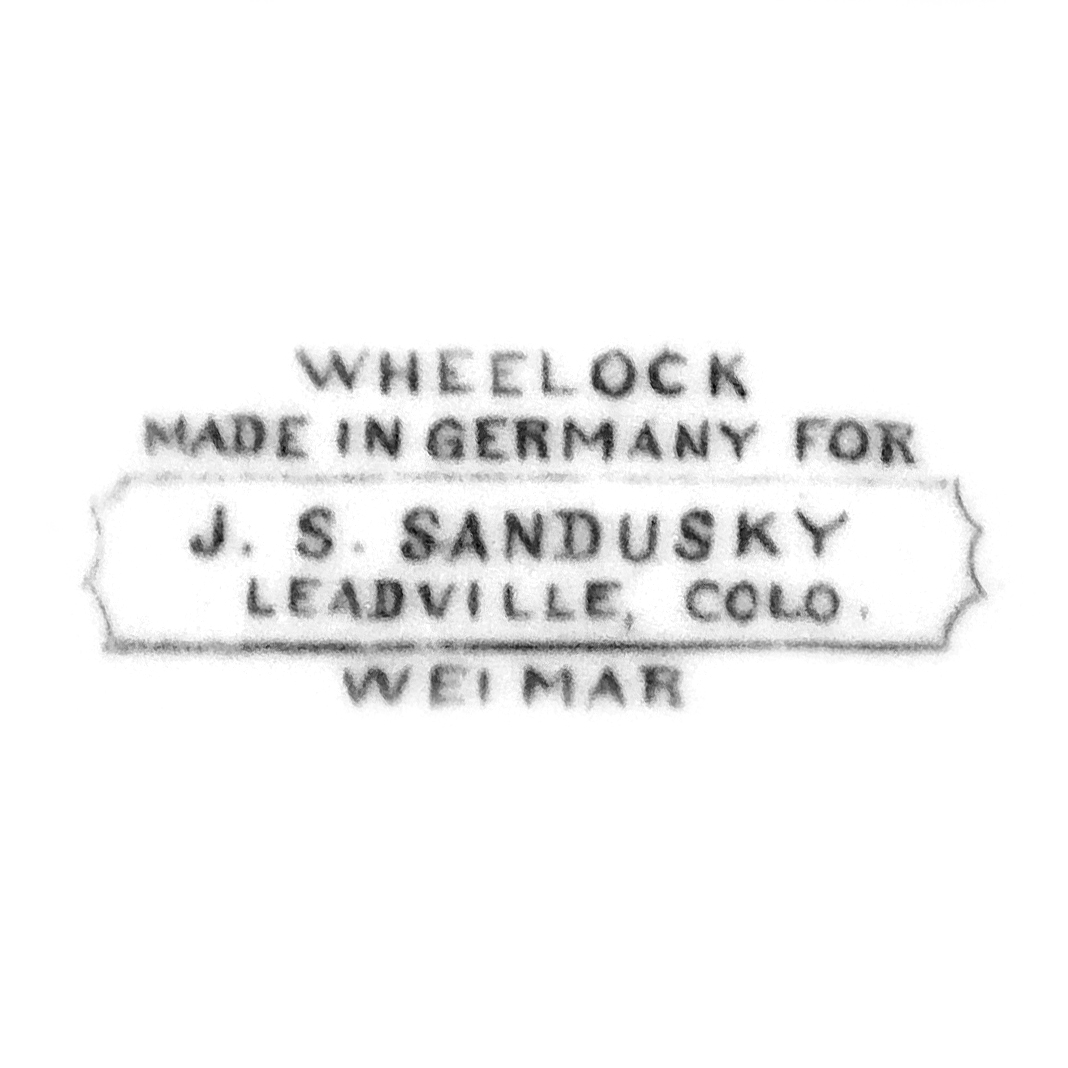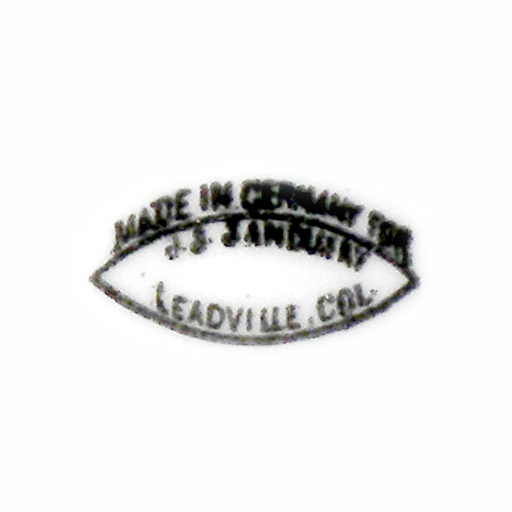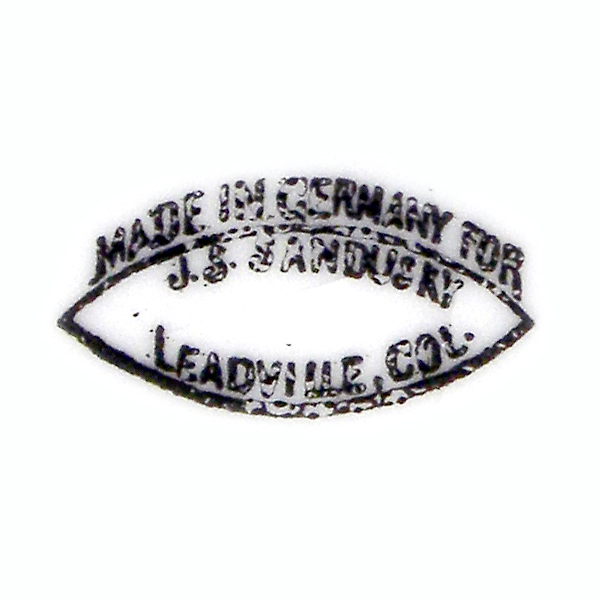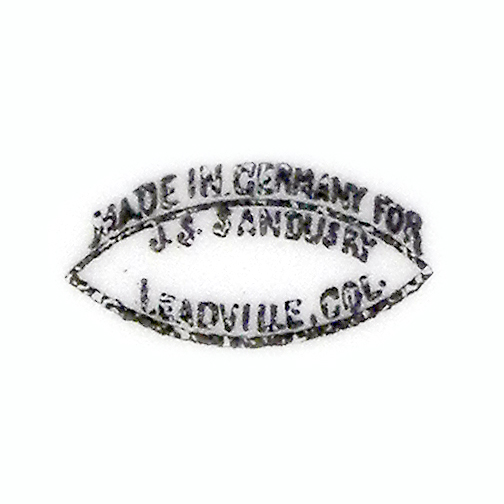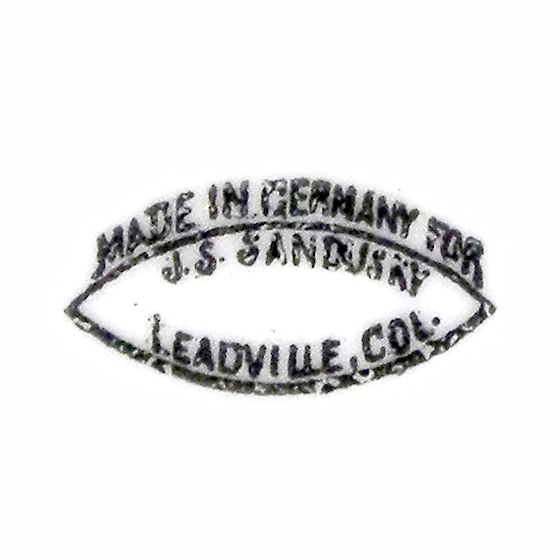The word souvenir is French meaning “memory”, or specifically “to come to mind”, which can include any range of items that serves as a reminder of a person, place, or event. Souvenir china, spoons, and other decorative items were quite popular from the 1890s to WWI, which created a thriving souvenir china industry.
Jennie (J. S.) Sandusky decided to add souvenir china in 1897 to her store of furniture and second hand goods. She obtained customized plates, dishes, cups, creamers, and the like from the American company, Wheelock China, which had the porcelainware manufactured in Germany or in Austria, depending on the manufacturing date of the ware. Wheelock was a large importer that solicited customized china products for merchants across the United States.
The china on this page features images of Leadville landmarks and mining, many of which still stand, onto “template” china.
"Charles, George, and Arthur Wheelock of Janesville, Wisconsin formed a cooperative enterprise to sell fine china in 1877-1878. By about 1894, they came up with a new idea that gave birth to the idea of souvenir china." [reword]
The broad region encompassing Germany, Austria, and parts of Poland and Czechoslovakia were rich in fine, white kaolin clay used to construct “thin china”. This process required several steps.
This kaolin clay, “hard paste” porcelain, was formed into a plate, dish, cup, creamer, etc and air dried then fired in a kiln at a low temperature.
The bisqued piece was then coated with a base glaze and fired again in a kiln at a high temperature.
Custom images for each piece were copied from photographs provided by the shop owner. Engravers would engrave the image from the photo onto a steel or copper plate. Then, a worker would ink the plate and print a decal, which was usually a multicolor, multiplate process.
A worker then burnished the printed decal onto the porcelain item and finished it with any hand painted features, like decorative borders or gilding. A maker’s mark stamped on the bottom finished the decoration.
A third firing of the item in a low temperature kiln permanently sealed the image onto the porcelain.
Jennie Sandusky, wife of Abraham Sandusky, operated a store at two locations simultaneously, one at 113 Harrison Avenue and the other at 517 Harrison avenue.
Another part of fabrication is with a maker's mark on the bottom of each piece. The entire process from raw clay to finished piece was not done in the same place, nor made in the same places over time. For each item made, the maker and location are stamped along with the orderer and location, in this case J.S. Sandusky in Leadville, Colorado. The image below shows the maker’s marks of these pieces and the variations of the stamps.

This shows a sampling of the variation of maker’s marks on the souvenir china.
The pieces shown on this page have an arrangement of nearly identical maker's marks and can therefore be grouped together as probably made at the same time at the same location.

